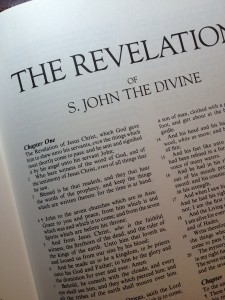Integrating the End-Times Scenarios of the Olivet Prophecy and the Book of Revelation
The General Tribulation Period
Certain aspects of the prophetic scenario that Yeshua lays out in Matthew 24 were fulfilled in A.D. 70 with Jerusalem’s destruction. Discussing the events around A.D. 70 is beyond the scope of this work, so I’ll pass over this subject and focus on those prophecies that are clearly eschatological (i.e., those that deal with end-times events) in nature.
The time period of the Olivet Prophecy started in the first century A.D. and continues until the second coming.
Matthew 24:4–8 describes conditions that existed on earth at A.D. 70, and that would continue and intensify up until the second coming. These include:
- Religious deception — the spirit of Antimessiah. (John talks about this spirit in his first epistle, and says that it was active in his day, 1 John 2:18–19.)
- Wars and rumors of wars.
- Famines.
- Pestilence.
These four conditions answer the disciples’ question about what would be the signs of the end times (Matt 24:3), and they also correlate one-to-one with the first four seals (commonly known as the four horsemen of the apocalypse) of Revelation 6.
Religious deception corresponds to the first horse (Rev 6:2).
Wars and rumors of wars corresponds to the second horse (Rev 6:3).
Famines corresponds to the third horse (Rev 6:5).
Pestilence corresponds to the fourth horse (Rev 6:7).
Next in Matthew 24 comes the martyrdom of the saints — something that has been happening since the death of Stephen in the Book of Acts to this present day (Matt 24:9–14). This martyrdom corresponds with the fifth seal of Revelation 6:9–11.
There are two groups of martyred saints: those who are killed before the end of the tribulation period and just before the beginning of the great tribulation, and those who are martyred afterwards. This second martyrdom completes the martyrdom of saints that has been going on over the ages (Rev 6:11lp).
The great end-times martyrdom of saints corresponds with the worldwide preaching of the gospel (Matt 24:14). This prophecy of Yeshua about the gospel being preached to all the world has only been fulfilled recently. Continue reading



